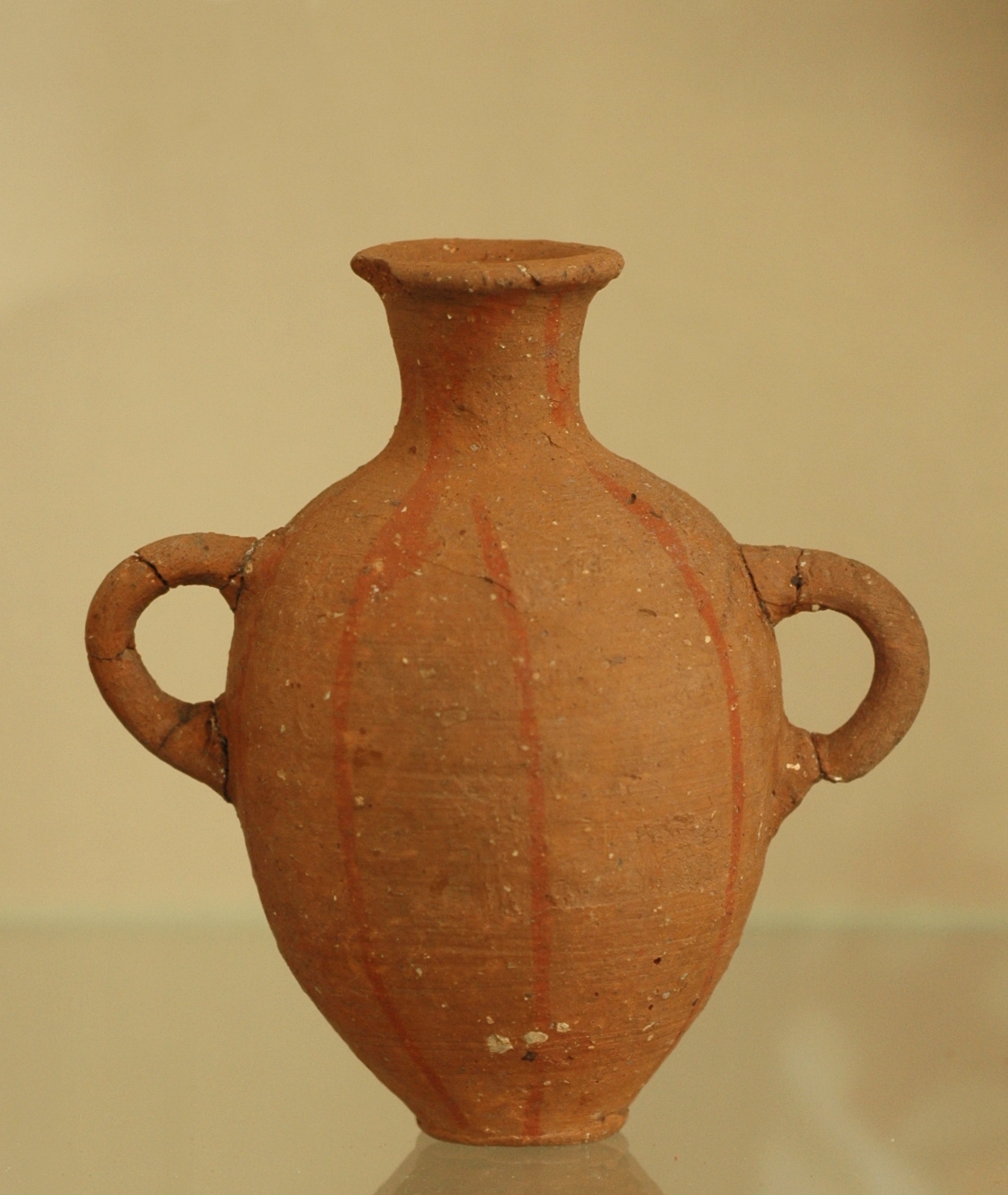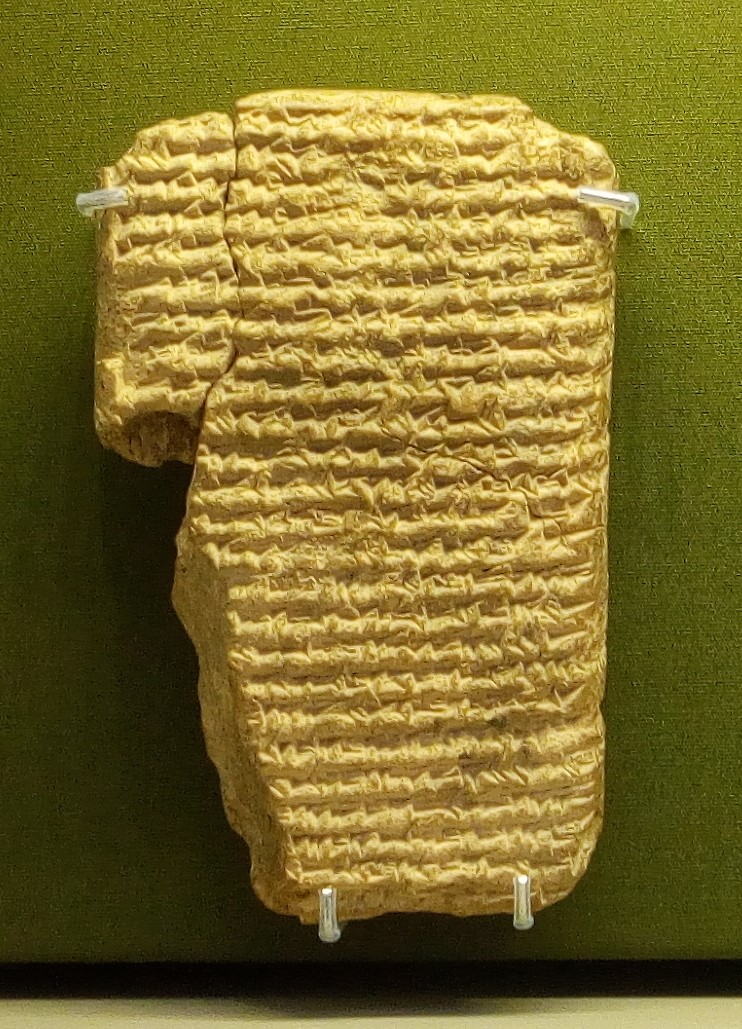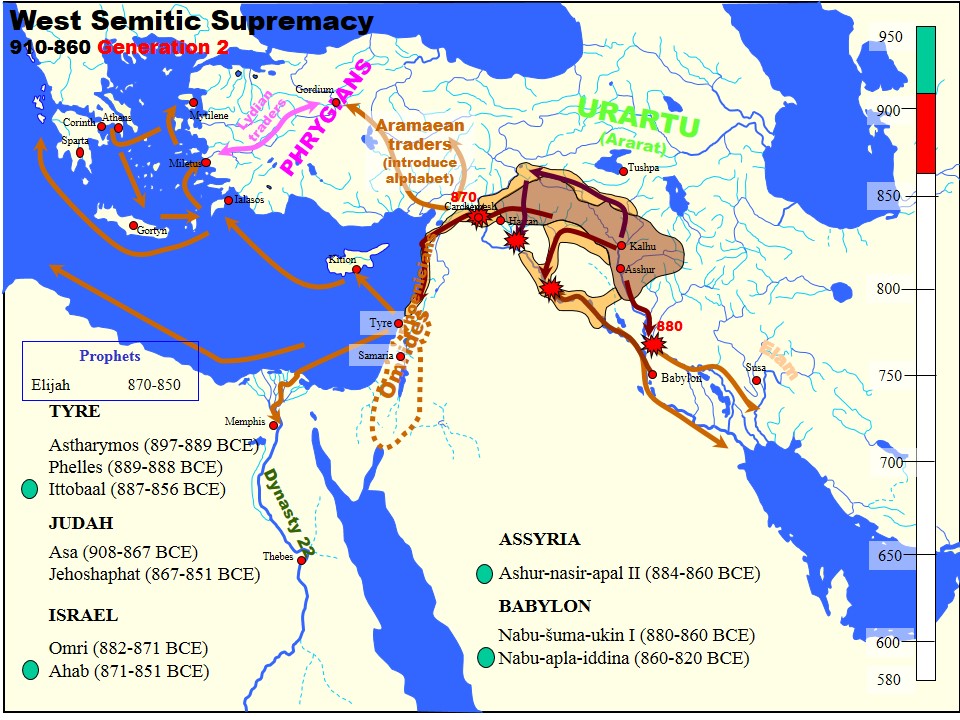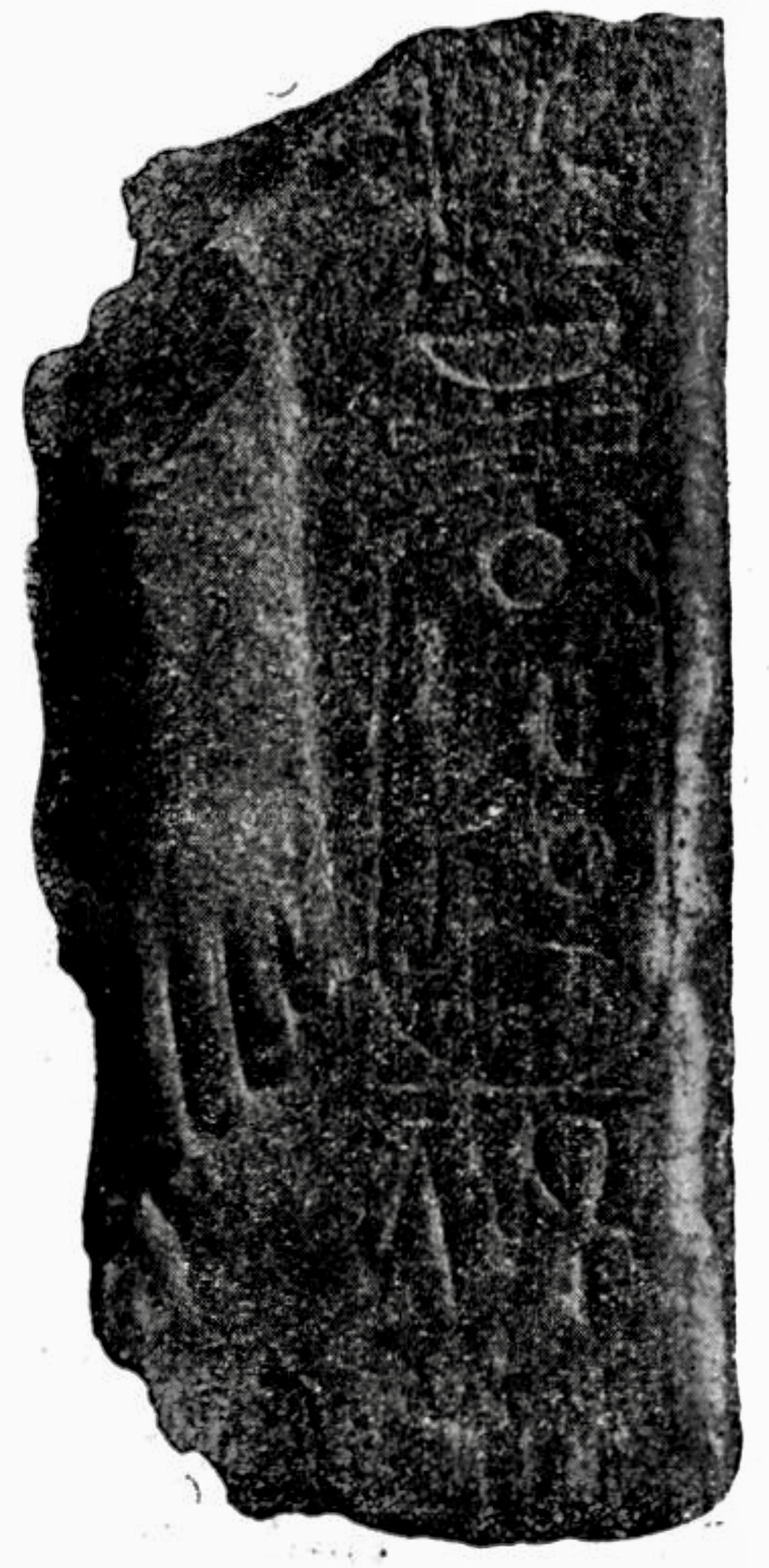|
Kings Of Byblos
The Kings of Byblos were the rulers of Byblos, the ancient Phoenician city in what is now Lebanon. Scholars have pieced together the fragmented list from various archaeological finds since the 19th century. Early period Some kings of Byblos from an early period are known from Egyptian and local finds: * Ib-dadi, contemporary of Amar-Sin. * Abishemu of Byblos, Abishemu I, probably contemporary of Amenemhat III. * Yapi-shemu-abi, contemporary of Amenemhat IV. * Yakin-ilu, contemporary of Sehetepibre, Sehetepibre I/II. * Yantin-'Ammu, Yantin-ʿammu, contemporary of Zimri-Lim, probably identical to Yantin, contemporary of Neferhotep I. * Ilima-yapi? - a prince, not explicitly of Byblos. * Ḥasrurum son of Rum, a ruler of the land of Byblos, probably contemporary of Sihathor. * Abishemu II. * Yapaʿ-shemu-abi, son of Abishemu (probably the second). * ʿegel, son of Abishemu (probably the second), probably identical to ʿegliya (whose father name is unknown). Egyptian period * Rib-Hadd ... [...More Info...] [...Related Items...] OR: [Wikipedia] [Google] [Baidu] |
Byblos
Byblos ( ; ), also known as Jebeil, Jbeil or Jubayl (, Lebanese Arabic, locally ), is an ancient city in the Keserwan-Jbeil Governorate of Lebanon. The area is believed to have been first settled between 8800 and 7000BC and continuously inhabited since 5000BC. During its history, Byblos was part of numerous cultures including Old Kingdom of Egypt, Egyptian, Phoenician, Assyrian, Achaemenid Empire, Persian, Hellenistic period, Hellenistic, Roman Empire, Roman, Genoese Republic, Genoese, Mamluk Sultanate, Mamluk and Ottoman Empire, Ottoman. Urbanisation is thought to have begun during the third millennium BC when it developed into a city, making it one of the List of oldest continuously inhabited cities, oldest cities in the world, if not the oldest. It is a UNESCO World Heritage Site. It was in Ancient Byblos that the Phoenician alphabet, likely the ancestor of the Greek alphabet, Greek, Latin and all other Western alphabets, was developed. Etymology The name appears as ''Keb ... [...More Info...] [...Related Items...] OR: [Wikipedia] [Google] [Baidu] |
Story Of Wenamun
The Story of Wenamun (alternately known as the Report of Wenamun, The Misadventures of Wenamun, Voyage of Unamūn, or nformallyas just Wenamun) is a literary text written in hieratic in the Late Egyptian language. It is only known from one incomplete copy discovered in 1890 at al-Hibah, Egypt, and subsequently purchased in 1891 in Cairo by the Russian Egyptologist Vladimir Golenishchev. It was found in a jar together with the Onomasticon of Amenope and the Tale of Woe. The story features a mixture of literary tropes along with an administrative writing style, which has led to a longstanding uncertainty about whether it is a fictitious account or a genuine historical document. Despite this, what scholars can agree on is its importance in showing the political and religious state of Egypt during the transition between the New Kingdom and the Third Intermediate Period. The papyrus is now in the collection of the Pushkin Museum of Fine Arts, Moscow, and officially designated a ... [...More Info...] [...Related Items...] OR: [Wikipedia] [Google] [Baidu] |
Son Of Safatba'al Inscription
The Son of Safatba'al inscription is a Phoenician inscription (KAI 9) dated to 500-475 BCE. It was published in Maurice Dunand's ''Fouilles de Byblos'' (volume I, 1926–1932, numbers 1143, plate XXXIII). It is currently at the National Museum of Beirut. Text of the inscription Three parts of the inscription are extant. The largest, fragment A (six lines), reads: Two smaller fragments, B and C, have been joined together and are now known as fragment B. It reads: Bibliography * Christopher Rollston,The Dating of the Early Royal Byblian Phoenician Inscriptions: A Response to Benjamin Sass" ''MAARAV'' 15 (2008): 57–93. * Benjamin Mazar, The Phoenician Inscriptions from Byblos and the Evolution of the Phoenician-Hebrew Alphabet, in The Early Biblical Period: Historical Studies (S. Ahituv and B. A. Levine, eds., Jerusalem: IES, 1986 riginal publication: 1946: 231–247. * William F. Albright William Foxwell Albright (May 24, 1891 – September 19, 1971) ... [...More Info...] [...Related Items...] OR: [Wikipedia] [Google] [Baidu] |
Ashurbanipal
Ashurbanipal (, meaning " Ashur is the creator of the heir")—or Osnappar ()—was the king of the Neo-Assyrian Empire from 669 BC to his death in 631. He is generally remembered as the last great king of Assyria. Ashurbanipal inherited the throne as the favored heir of his father Esarhaddon; his 38-year reign was among the longest of any Assyrian king. Though sometimes regarded as the apogee of ancient Assyria, his reign also marked the last time Assyrian armies waged war throughout the ancient Near East and the beginning of the end of Assyrian dominion over the region. Esarhaddon selected Ashurbanipal as heir 673. The selection of Ashurbanipal bypassed the elder son Shamash-shum-ukin. Perhaps in order to avoid future rivalry, Esarhaddon designated Shamash-shum-ukin as the heir to Babylonia. The two brothers jointly acceded to their respective thrones after Esarhaddon's death in 669, though Shamash-shum-ukin was relegated to being Ashurbanipal's closely monitored vassal. Mu ... [...More Info...] [...Related Items...] OR: [Wikipedia] [Google] [Baidu] |
Esarhaddon
Esarhaddon, also spelled Essarhaddon, Assarhaddon and Ashurhaddon (, also , meaning " Ashur has given me a brother"; Biblical Hebrew: ''ʾĒsar-Ḥaddōn'') was the king of the Neo-Assyrian Empire from 681 to 669 BC. The third king of the Sargonid dynasty, Esarhaddon is most famous for his conquest of Egypt in 671 BC, which made his empire the largest the world had ever seen, and for his reconstruction of Babylon, which had been destroyed by his father. After Sennacherib's eldest son and heir Aššur-nādin-šumi had been captured and presumably executed in 694, the new heir had originally been the second eldest son, Arda-Mulissu, but in 684, Esarhaddon, a younger son, was appointed instead. Angered by this decision, Arda-Mulissu and another brother, Nabû-šarru-uṣur, murdered their father in 681 and planned to seize the Neo-Assyrian throne. The murder, and Arda-Mulissu's aspirations of becoming king himself, made Esarhaddon's rise to the throne difficult and he first ... [...More Info...] [...Related Items...] OR: [Wikipedia] [Google] [Baidu] |
Sennacherib's Campaign In The Levant
Sennacherib's campaign in the Levant in 701 BCE was a military campaign undertaken by the Neo-Assyrian Empire to bring the region back under control following a rebellion against Assyrian rule in 705 BCE. After the death of Sargon II, Sennacherib’s father, a number of states in the Levant renounced their allegiance to Assyria. The rebellion involved several small states: Sidon and Ashkelon (which were taken by force) and Byblos, Ashdod, Ammon, Moab, and Edom who then submitted to the payment of tribute to Assyria. Most notably, Hezekiah of Judah, encouraged by Egypt, joined the rebellion and was subsequently invaded by the Assyrians who captured most of the cities and towns in the region. Hezekiah was trapped in Jerusalem by an Assyrian army and the surrounding lands were given to Assyrian vassals in Ekron, Gaza, and Ashdod, however, the city was not taken and Hezekiah was allowed to remain on his throne as an Assyrian vassal after paying a large tribute. The events of the camp ... [...More Info...] [...Related Items...] OR: [Wikipedia] [Google] [Baidu] |
Sennacherib
Sennacherib ( or , meaning "Sin (mythology), Sîn has replaced the brothers") was the king of the Neo-Assyrian Empire from 705BC until his assassination in 681BC. The second king of the Sargonid dynasty, Sennacherib is one of the most famous Assyrian kings for the role he plays in the Hebrew Bible, which describes his Sennacherib's campaign in the Levant, campaign in the Levant. Other events of his reign include his destruction of the city of Babylon in 689BC and his renovation and expansion of the last great Assyrian capital, Nineveh. Although Sennacherib was one of the most powerful and wide-ranging Assyrian kings, he faced considerable difficulty in controlling Babylonia, which formed the southern portion of his empire. Many of Sennacherib's Babylonian troubles stemmed from the Chaldean tribal chief Marduk-apla-iddina II, who had been List of kings of Babylon, Babylon's king until Sennacherib's father defeated him. Shortly after Sennacherib inherited the throne in 705BC ... [...More Info...] [...Related Items...] OR: [Wikipedia] [Google] [Baidu] |
Akkadian Language
Akkadian ( ; )John Huehnergard & Christopher Woods, "Akkadian and Eblaite", ''The Cambridge Encyclopedia of the World's Ancient Languages''. Ed. Roger D. Woodard (2004, Cambridge) Pages 218–280 was an East Semitic language that is attested in ancient Mesopotamia ( Akkad, Assyria, Isin, Larsa, Babylonia and perhaps Dilmun) from the mid- third millennium BC until its gradual replacement in common use by Old Aramaic among Assyrians and Babylonians from the 8th century BC. Akkadian, which is the earliest documented Semitic language, is named after the city of Akkad, a major centre of Mesopotamian civilization during the Akkadian Empire (–2154 BC). It was written using the cuneiform script, originally used for Sumerian, but also used to write multiple languages in the region including Eblaite, Hurrian, Elamite, Old Persian and Hittite. The influence of Sumerian on Akkadian went beyond just the cuneiform script; owing to their close proximity, a lengthy span of con ... [...More Info...] [...Related Items...] OR: [Wikipedia] [Google] [Baidu] |
Ashurnasirpal II
Ashur-nasir-pal II (transliteration: ''Aššur-nāṣir-apli'', meaning " Ashur is guardian of the heir") was the third king of the Neo-Assyrian Empire from 883 to 859 BC. Ashurnasirpal II succeeded his father, Tukulti-Ninurta II. His son and successor was Shalmaneser III and his queen was Mullissu-mukannišat-Ninua. Reign During his reign he embarked on a vast program of expansion, first conquering the peoples to the north in Asia Minor as far as Nairi and exacting tribute from Phrygia, then invading Aram (modern Syria) conquering the Aramaeans and Neo-Hittites between the Khabur and the Euphrates Rivers. The palaces, temples and other buildings raised by him bear witness to a considerable development of wealth and art. Cruelty Ashurnasirpal II was notorious for his brutality, using enslaved captives to build a new Assyrian capital at Kalhu (Nimrud) in Mesopotamia where he built many impressive monuments. He was also a shrewd administrator, who realized that he could gain ... [...More Info...] [...Related Items...] OR: [Wikipedia] [Google] [Baidu] |
Safatba'al Inscription
The Safatba'al inscription or the Shipitbaal inscription is a Phoenician inscription (KAI 7, TSSI III 9) found in Byblos in 1936, published in 1945. It is at the National Museum of Beirut. Text of the inscription The inscription reads: Bibliography * Christopher Rollston,The Dating of the Early Royal Byblian Phoenician Inscriptions: A Response to Benjamin Sass" ''MAARAV'' 15 (2008): 57–93. * Benjamin Mazar, The Phoenician Inscriptions from Byblos and the Evolution of the Phoenician-Hebrew Alphabet, in The Early Biblical Period: Historical Studies (S. Ahituv and B. A. Levine, eds., Jerusalem: IES, 1986 [original publication: 1946]): 231–247. * William F. Albright, The Phoenician Inscriptions of the Tenth Century B.C. from Byblus, JAOS 67 (1947): 153–154. * References {{reflist Phoenician inscriptions Collection of the National Museum of Beirut Phoenician steles Byblian royal inscriptions 1936 archaeological discoveries KAI inscriptions Inscriptions of Lebanon ... [...More Info...] [...Related Items...] OR: [Wikipedia] [Google] [Baidu] |
Osorkon Bust
The Osorkon Bust, also known as the Eliba'l Inscription is a bust of Egyptian pharaoh Osorkon I, discovered in Byblos (in today's Lebanon) in the 19th century. Like the Tabnit sarcophagus from Sidon, it is decorated with two separate and unrelated inscriptions – one in Egyptian hieroglyphics and one in Phoenician script. It was created in the early 10th century BC, and was unearthed 1881, very likely in the Temple of Baalat Gebal. The Egyptian writing is the Prenomen (Ancient Egypt), prenomen of Osorkon, and the Phoenician is a dedication to Elibaal, the king of Byblos. The details of the find were published in by French archaeologist René Dussaud in 1925. The bust is made of quartzite, and is 60 cm × 36 cm × 37.5 cm. Discovery The first mention of the statue was by German archaeologist Alfred Wiedemann in 1884 in his ''Ägyptische Geschichte'': In English: "two fragments of a large stone statue have also been preserved [owned by Mr. :it:Meuricoffre, Meuricoffre at Naple ... [...More Info...] [...Related Items...] OR: [Wikipedia] [Google] [Baidu] |







